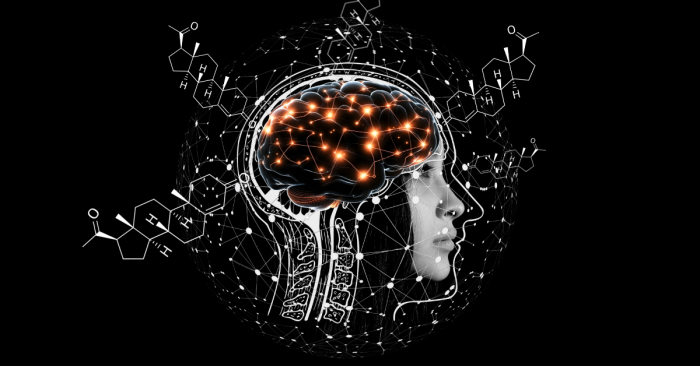Epilepsy treatment
Any epilepsy treatment must be viewed in the context that the causes of epilepsy are many and inadequately understood. Epilepsy is a neurological brain disorder, causing transient episodes of disturbed neuronal activity in the brain. Because neurons are firing abnormally, people can experience strange sensations, emotions and behaviour. Sometimes convulsions, muscle spasms, and loss of consciousness occur. A single seizure is not regarded as epilepsy.
New cases are found more frequently in infants and the elderly, in fact it becomes more frequent with age. About 50 million people around the world have it, with new cases more prevalent in the developing world.
Not all cases of epilepsy are a lifelong problem.
It can be due to many causes, some of which are...
- stroke
- dementia
- traumatic brain injury
- infections, including brain abscess, meningitis, encephalitis, and AIDS
- congenital brain defect
- brain injury that occurs during or near birth
- phenylketonuria
- brain tumor
- abnormal blood vessels in the brain
- other illness that damages or destroy brain tissue
- reproductive hormones
An EEG is done to check electrical activity in the brain. A CT or MRI are often performed to check which area of the brain is affected.
Although epilepsy treatment by medication can control seizures in most people, 30% are not helped.
But this page is not about the complex subject of epilepsy and epilepsy treatments in general, but about catamenial epilepsy, or epilepsy that aligns itself with the menstrual cycle.
Reproductive hormones are neuroactive, and their cyclic variation during the menstrual cycle can either excite neuronal activity, or calm it.
There appear to be three, possibly more, patterns of catamenial seizure exacerbation. Those that are known are during the pre-menstrual days, the pre-ovulatory days or during the entire luteal phase in anovulatory cycles.
Approximately one third of women with seizures have catamenial epilepsy.
In seizures showing hormonal sensitivity, trials have found they respond to hormone treatment. Successful trials have been conducted with progesterone in women, and testosterone, an oestrogen antagonist in men. Men are occasionally given aromatase inhibitors, which prevents the conversion of testosterone to oestrogen.
All three estrogen's, oestrone (E1), oestradiol (E2) and estriol (E3) cause neuronal excitability. Oestradiol is the principle activator during the reproductive years, while the higher oestrone levels in menopause are also implicated. Oestriol, which increases in pregnancy, inhibits GABA, one of the most calming neurotransmitters.
In women with a history of seizures, studies have found they increase after birth. This is not surprising as levels of progesterone drop sharply after birth.
In the event of seizures developing shortly after birth, in a woman who has never had them, the probability is high that the drop in progesterone has caused them. This would be particularly pertinent if anti-seizure meds had no effect.
Progesterone has neuroprotective effects in the brain, in particular it's metabolite allopregnanolone. Seizure exacerbation is especially noticeable during the few days before menstruation, when the ratio of progesterone to oestrogen is low to very low. And during the oestrogen surge in the mid to late follicular phase, when progesterone levels are very low.
It's not until about fifty hours prior to ovulation, when there's a surge of progesterone from the brian, or ovulation itself has occurred, that progesterone levels begin rising.
Anovulation or a defective luteal phase results in low progesterone levels. A defective luteal phase can be one that's too short, or the corpus luteum is not producing sufficient progesterone. Thus making oestrogen the dominant hormone, progesterone should be dominant in the luteal phase.
This is particularly prevalent during Peri-menopause, when anovulatory cycles increase in frequency until menopause, when the ovaries cease producing viable eggs. There is a corresponding increase in seizures during peri-menopause, and a drop in Menopause.
In women with catamenial epilepsy, HRT increases the occurrence.
In 1974 a trial was conducted using supplemental vitamin D as an epilepsy treatment. The number of seizures was reduced during treatment, but not with the placebo. Fast forward nearly forty years and both clinical and experimental studies still show a link between vitamin D dysfunction and epilepsy.
Many anti-epileptic drugs reduce vitamin D to dangerously low levels. Many also reduce calcium levels, paving the way to osteomalacia.
Vitamin D is essential for normal cell function. Accumulating data has shown it is vital not only for brain development in utero, but in the adult brain too. Like progesterone, vitamin D is neuroprotective.
Women with low levels of vitamin D while pregnant are more likely to have infants with epilepsy.
The biological effects of vitamin D in the nervous system include the biosynthesis of neurotrophic factors and enzymes involved in neurotransmitter synthesis. The inhibition of the synthesis of inducible nitric oxide synthase and an increase in glutathione levels suggests a role for vitamin D in brain detoxification pathways.
The evidence for a lack of vitamin D is shown quite clearly by an increase in seizure frequency in winter. Dull overcast days are also associated with an increase in seizure frequencies. With less sunlight, less vitamin D is produced. Complex partial seizures are significantly less likely to occur on bright sunny days, than on dull days with fewer hours of sunshine.
There is an increased risk of epilepsy in patients with coeliac disease. This is a greatly under-diagnosed condition and suggests that its treatment would provide an indirect epilepsy treatment.
Women with epilepsy are at greater risk for infertility, plus premature ovarian failure and menopause at a younger age than the general population.
Pure speculation, as there are no studies to corroborate it, it seems likely that a lack of progesterone and vitamin D are possible causes. Both are vital for normal ovarian function, both regulate gene expression, have a positive fundamental effect on cell differentiation and growth, with anti-oxidative and autoimmune anti-inflammatory mechanisms. Both positively effect the nervous system by stimulating neurotrophic factors, quenching oxidative hyperactivity and regulating autoimmune responses.
Studies on Traumatic Brain Injury (TBI) have shown that a lack of vitamin D reduces the benefits of progesterone. In over thirty years of testing, progesterone is the only substance which has shown dramatic results in TBI. When adding vitamin D to the protocol further beneficial results were found.
Infants born to mothers with a vitamin D deficiency are at greater risk of seizures after birth. This also applies to a taurine deficiency in the mother. Further checks should be made for unstable blood glucose and allergenic foods, avoid triggering agents such as alcohol, aspartame and MSG.
Natural epilepsy treatment
If catamenial epilepsy is suspected, progesterone therapy should be considered. Women should use no less than 200mg/day or more, dependent on symptoms. Although K. Dalton, M.D., found the minimum dose via progesterone suppositories was 400 mg twice daily.
If epileptic men have high oestrogen levels, progesterone should also be considered, using between 10-100mg/day or more.
As low vitamin D levels are found in epileptics, especially those on anti-convulsants, a test is essential, see the following websites for more info on testing
The blood level should be between 70-100ng/ml or 175-250nmol/L, and not the 30ng/ml or 75nmol/L most laboratories and doctors use as a cut off point for adequate levels. The minimum daily dose should be 5000iu's per day, or more if levels are very low. Although the latest research indicates it should be 10,000iu's per day, see here.
Several nutrients have shown a reduction in seizure exacerbation. Consider taking vitamin B6, magnesium, taurine, glycine, dimethylglycine, vitamin E, selenium, riboflavin, zinc and melatonin.
Some anticonvulsants reduce folic acid, vitamin B6, biotin, carnitine and in particular vitamin D. Ensure sufficient is taken to make up the loss.
Conventional epilepsy treatment
This can involve either drugs, surgery or diet. Drugs control the electrical activity, surgery removes the cause if it's a tumour etc. Many epilepsy drugs can cause birth defects if the mother is taking them while pregnant.
A ketogenic diet can be helpful in some cases, particularly children. This involves a low carb, high fat diet. See Vanderbilt University.
Web references for epilepsy treatment
Epilepsy treatment reference papers
 Are you struggling with irregular cycles, unwanted hair growth, or unexplained fatigue? You’re not alone. Polycystic Ovarian Syndrome (PCOS) affects up to 10% of women of reproductive age—and many mor…
Are you struggling with irregular cycles, unwanted hair growth, or unexplained fatigue? You’re not alone. Polycystic Ovarian Syndrome (PCOS) affects up to 10% of women of reproductive age—and many mor… While progesterone is often discussed in relation to reproductive health, emerging research reveals its remarkable role in supporting brain function and protecting against neurological decline. Proges…
While progesterone is often discussed in relation to reproductive health, emerging research reveals its remarkable role in supporting brain function and protecting against neurological decline. Proges… Incase you missed it!
Today is the last day for you to claim 15% off our Natpro 100ml Dispensers. The sale ends at midnight tonight.
How to Claim Your 15% Discount:
•Shop at
Incase you missed it!
Today is the last day for you to claim 15% off our Natpro 100ml Dispensers. The sale ends at midnight tonight.
How to Claim Your 15% Discount:
•Shop at  To all our valued customers, We’ve heard your requests for more flexibility with payment options and clearer access to usage and dosage instructions, and so we’re delighted to announce the launch of o…
To all our valued customers, We’ve heard your requests for more flexibility with payment options and clearer access to usage and dosage instructions, and so we’re delighted to announce the launch of o…